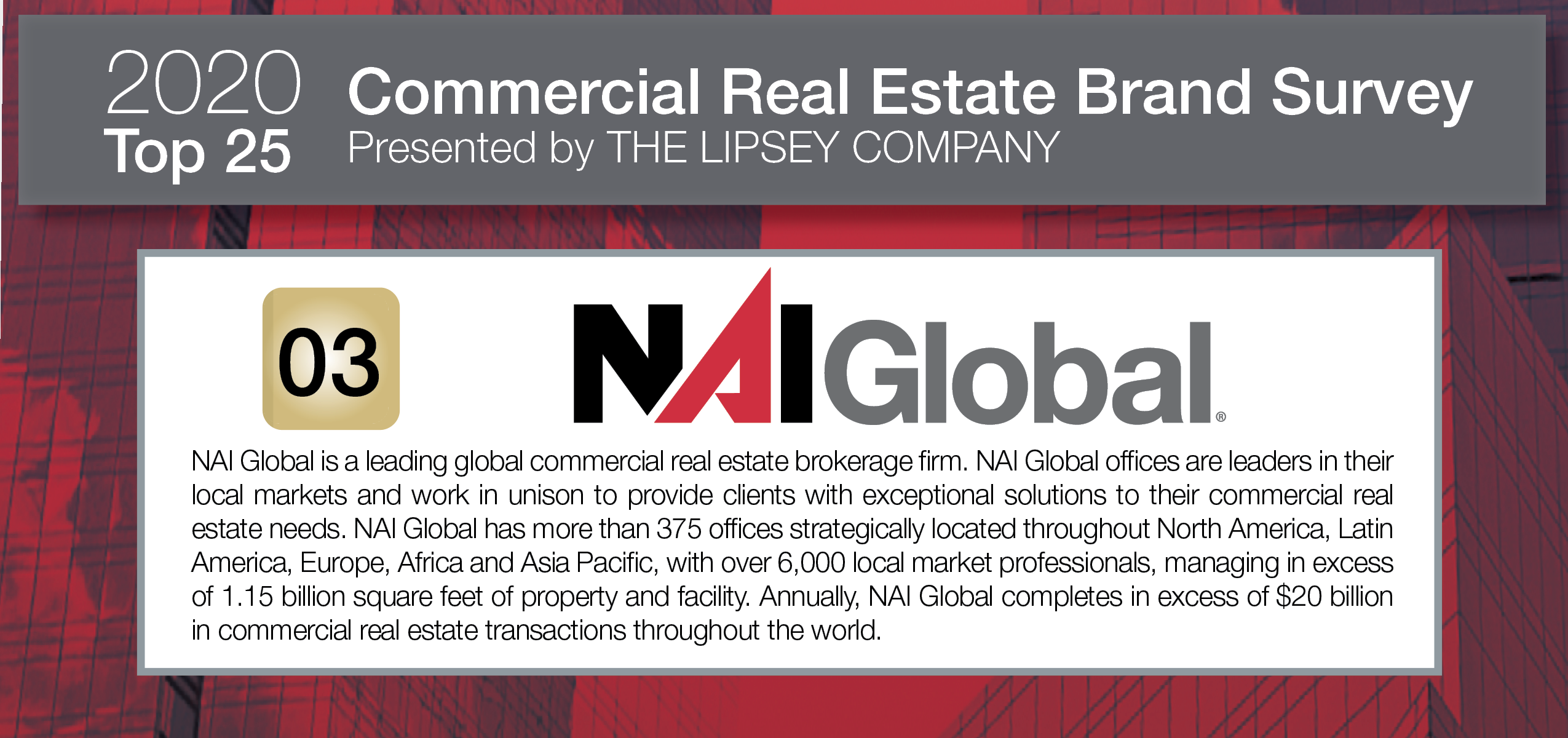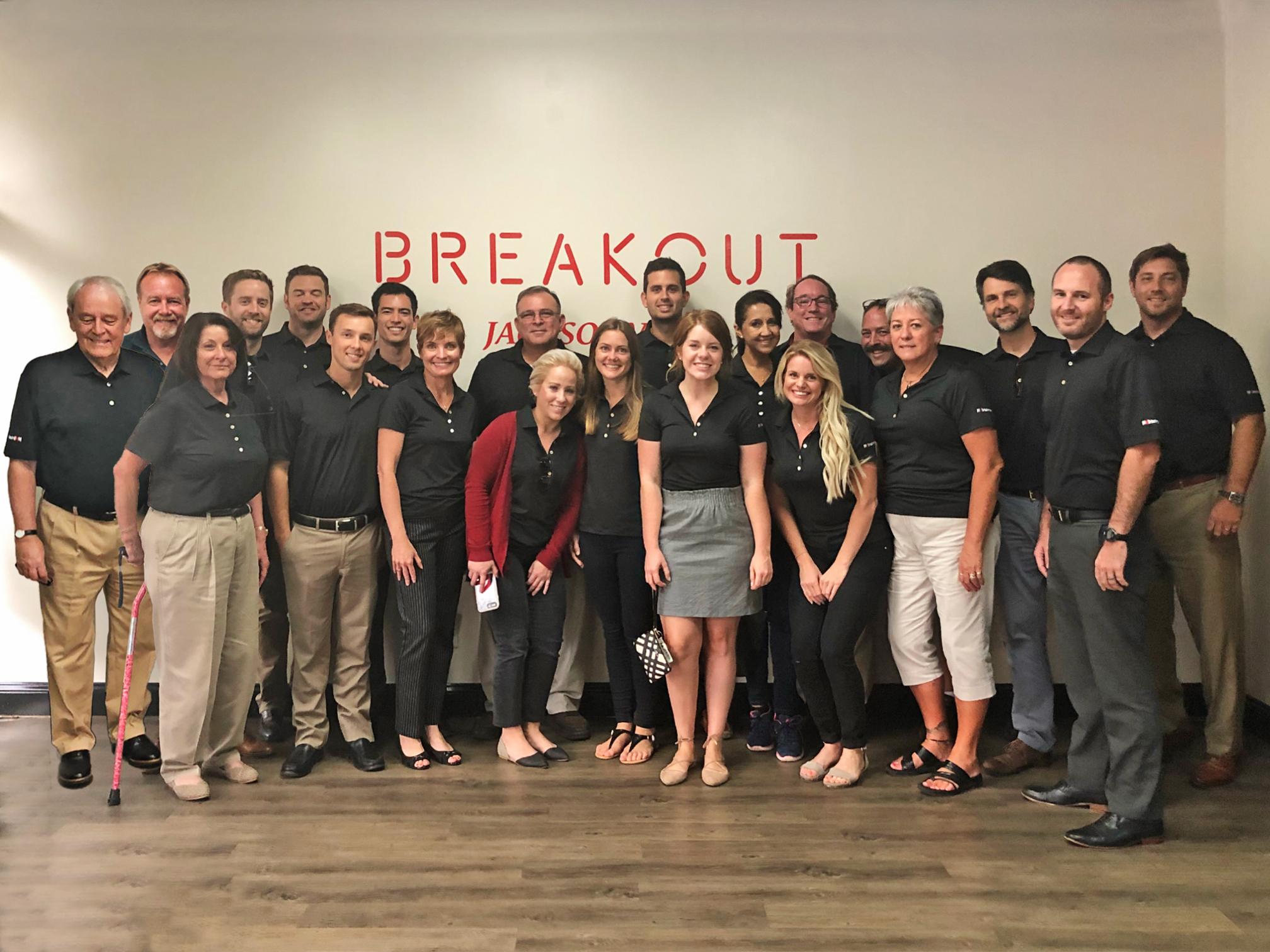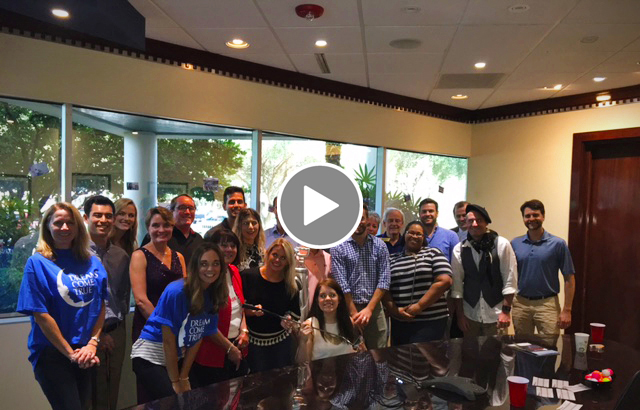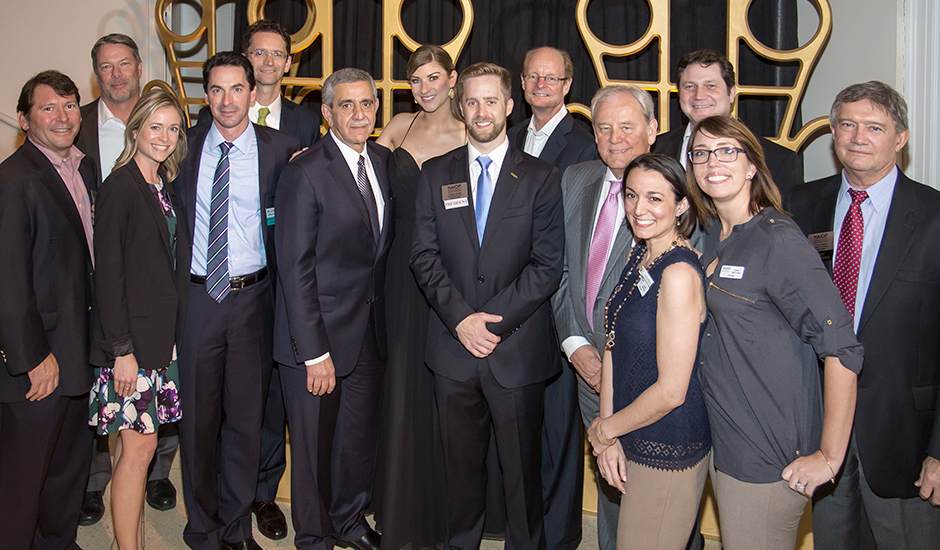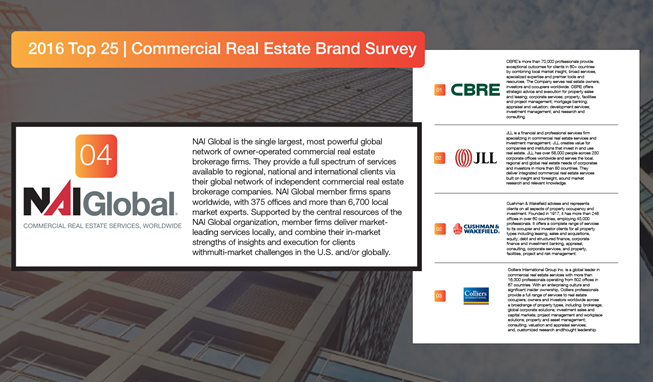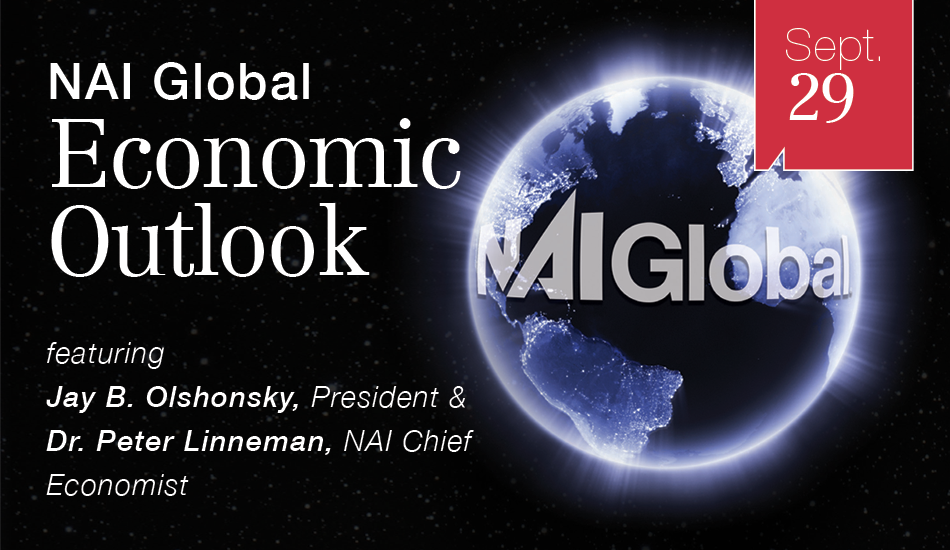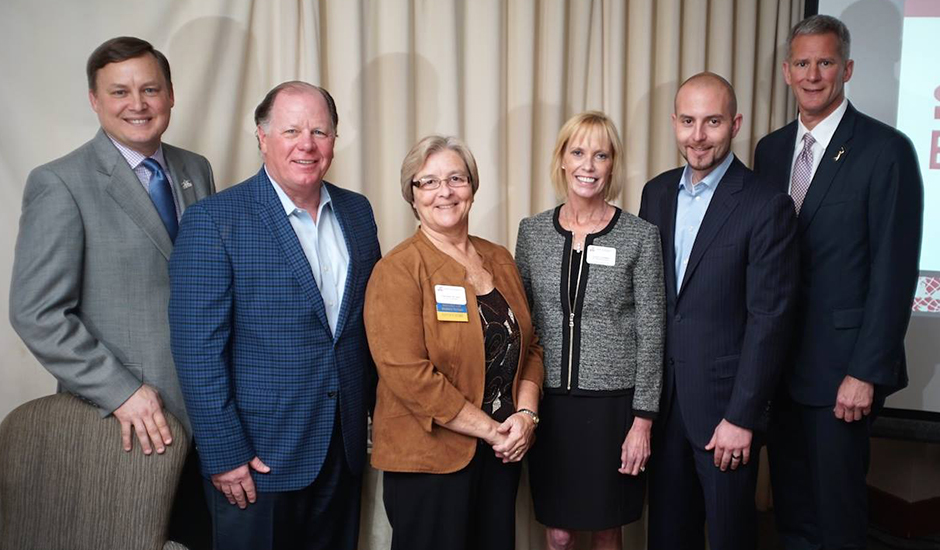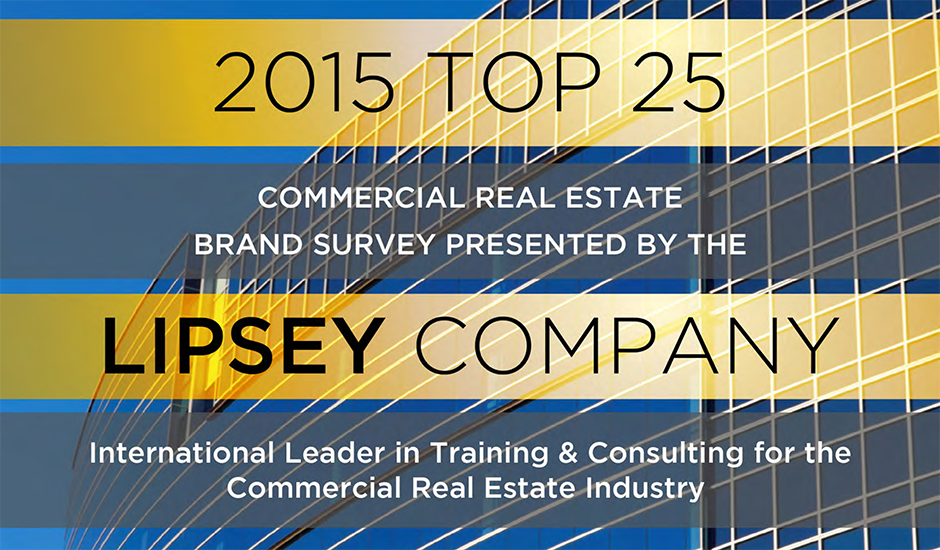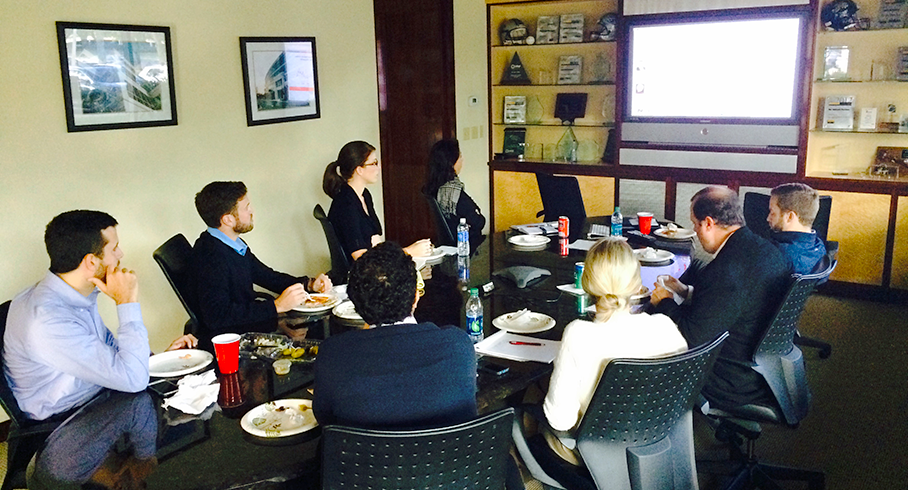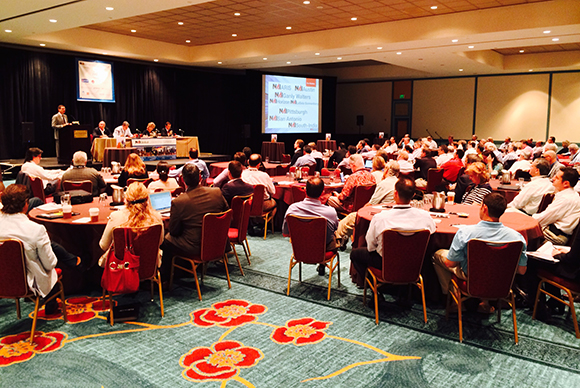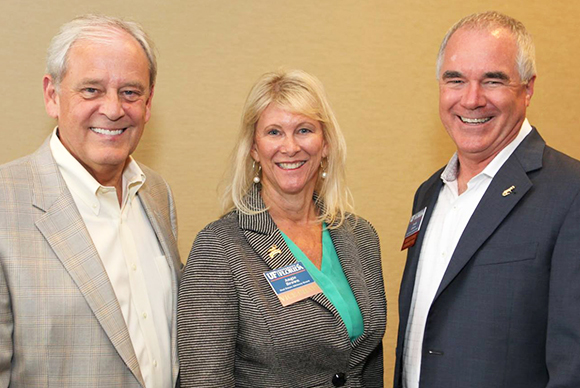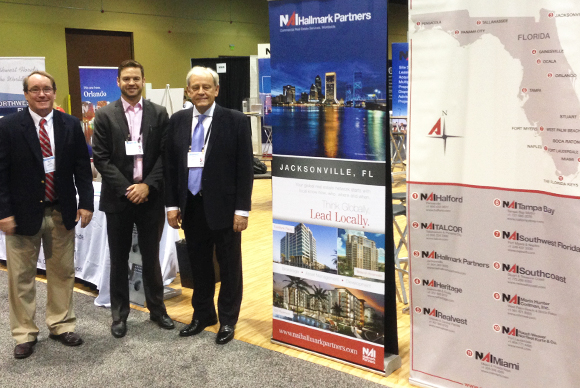Citigroup’s Global Head of Real Estate Thomas Flexner Joins NAI Global Chief Economist Dr. Peter Linneman in Address to 700+ Industry Leaders
Commercial real estate continues to be attractive to investors both in the US and abroad, with the outlook in the US stronger than the rest of the world, according to Tom Flexner, Global Head of Real Estate, Institutional Clients Group, Citigroup and Dr. Peter Linneman, NAI Global Chief Economist. The two renowned real estate experts were featured on a panel discussion in New York City on March 1, 2016 at the 2016 NAI Global Market Outlook. Over 700 individuals from NAI Global Member firms and their clients attended the event.
“One question on the mind of every commercial real estate investor is whether the market is peaking,” said Jay Olshonsky, FRICS, SIOR, President of NAI Global, who moderated the discussion. “The insights and perspectives shared by Mr. Flexner and Dr. Linneman will provide our NAI Global Members and their clients who attended today’s Global Market Outlook with a better understanding of what is driving the market and where potential investment opportunities might be.”
Olshonsky noted that 2015 saw $1 trillion in worldwide commercial sales, which led to discussion of the market cycle and the key factors influencing it, including interest rates, oil prices, geopolitical uncertainty, currency stabilization and capital markets.
“We’re not at the top of the market cycle, and conditions are in place to see that level increase,” said Flexner. “Year over year, we’re seeing increased cross-border transactions, with a total of $90 billion of foreign investment in US commercial real estate. Virtually every sovereign wealth fund has increased its target real estate allocation over the past three years by material amounts.” Flexner noted that the commercial real estate market will benefit from investors fearful of more volatile assets.
Linneman was less bullish on the market in Europe and Asia, particularly China, citing instability of the Euro and lack of transparency in China. Investors need a deeply connected network and flexibility in order minimize risk, and the current risk-reward balance is not attractive to equity investors.
For the US, Linneman points to interest rates, oil prices and capital markets as the three factors that will have the most effect on commercial real estate. He believes that a rise in interest rates will stimulate the overall economy, with the housing market benefiting 6 – 10 months after a Fed Rate increase.
“If we were playing baseball, I’d say that right now with real estate fundamentals we are in the sixth inning of a really slow game,” said Linneman.




